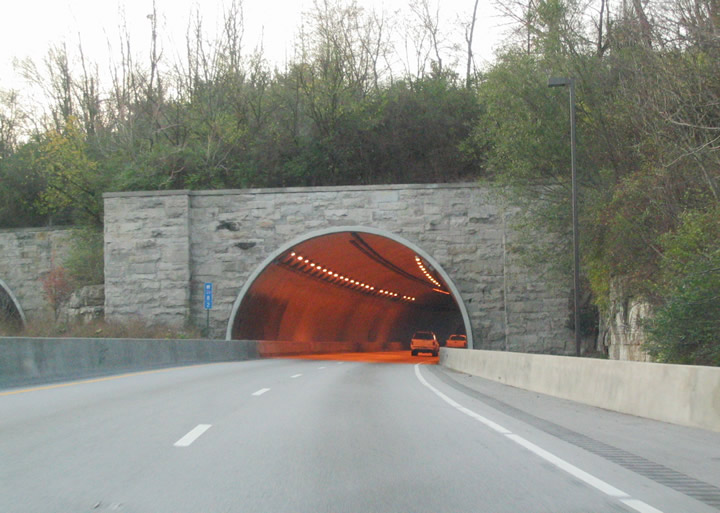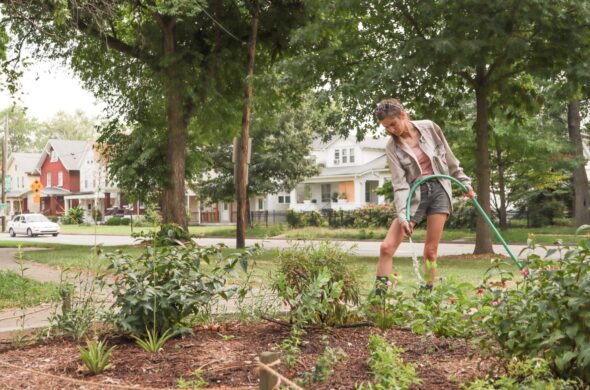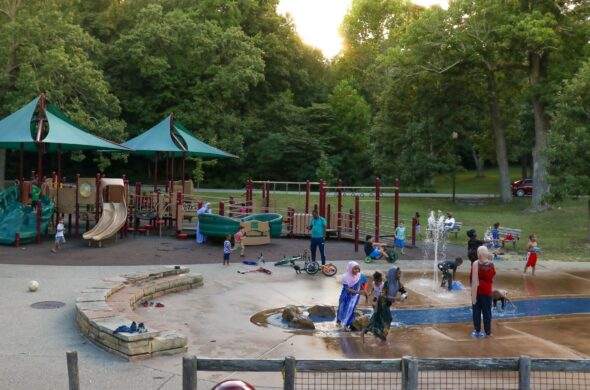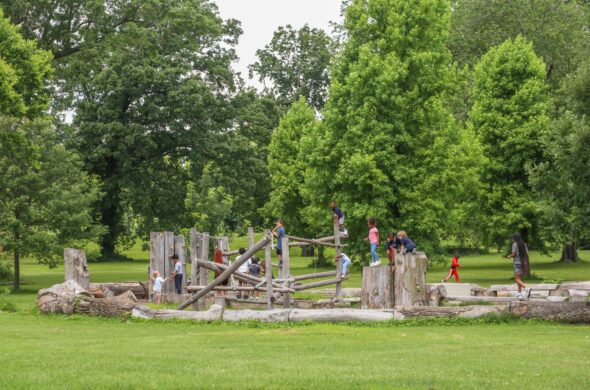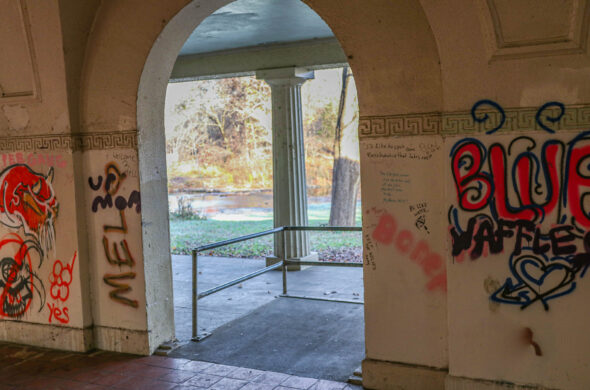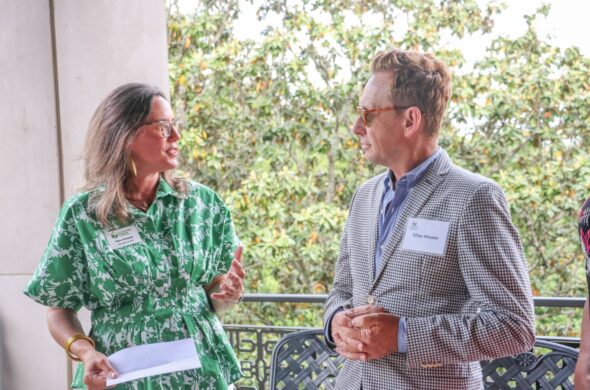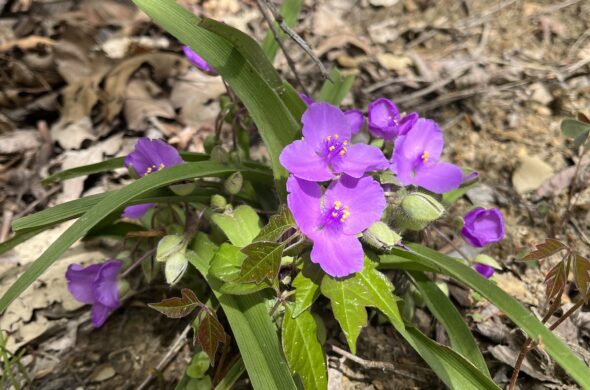UPDATE: KYTC I-64 CORRIDOR STUDY RELEASED
I-64 CORRIDOR STUDY – EXECUTIVE SUMMARY, DECEMBER 2021
Thank you to everyone who provided public input for the I-64 Corridor Study. Olmsted Parks Conservancy opposed any widening of I-64 and encouraged the public to complete the survey. KYTC stated in their report that widening I-64 would not be feasible at this time given the project cost, environmental impact and public opposition.
Widening the corridor would have dramatically altered Cherokee and Seneca Parks, resulting in the spread of exotic invasive species, loss of ecosystem services and an increase of noise pollution.
Thanks to everyone who took the survey and made their voice heard, they listened!
Olmsted Parks Conservancy opposes KYTC’s suggestion to widen I-64—which would directly impact Cherokee Park—for numerous historic and environmental reasons.
The Kentucky Transportation Cabinet is conducting a planning study for I-64 in Jefferson County. The study team has identified and evaluated potential strategies to improve the safety and congestion along I-64 between Story Avenue and I-264, focusing on interchanges at Story Avenue & Mellwood Avenue (Exit 7), Grinstead Drive (Exit 8) and Cannons Lane (Exit 10).
As a part of the planning study, Kentucky Transportation Cabinet has suggested widening I-64 at the Cochran Hill tunnel to add additional vehicle lanes. This action would directly encroach on Cherokee Park, Seneca Park, and Beargrass Creek, creating a host of issues for wildlife, potentially reduce park acreage, as well as open up the park to unmanaged and aggressive invasive species that threaten native plants.
please TAKE the survey and express support for our position BY opposing the widening of I-64.
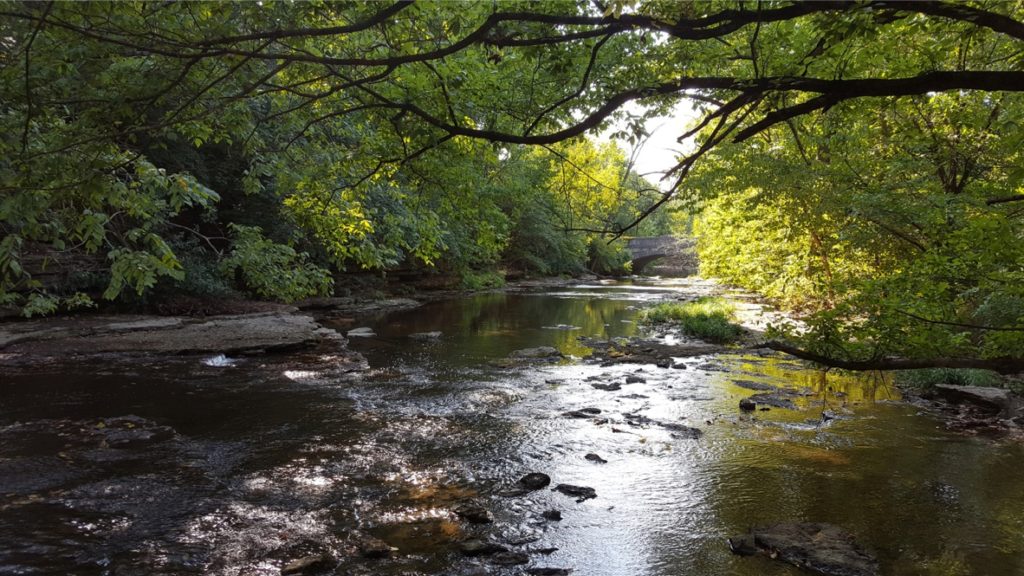
Olmsted Parks Conservancy’s Official Position
Cherokee Park was designed by the father of American landscape architecture, Frederick Law Olmsted, in 1891. Featuring grand views, winding walkways, and lush tree canopies, Cherokee Park has served residents and tourists alike as a breath-taking urban oasis for over a century, and today, draws in more than 1.6 million annual visitors.
Our organization opposes the expansion of I-64 at the Cochran Hill tunnel for both historic and environmental reasons, outlined (but not limited to) the below.
Historic Background
Cherokee Park is listed on the National Historic Register and Olmsted Parks Conservancy is working to get the entire Olmsted Park system, including Cherokee and Seneca Parks, designated as a National Historic Landmark.
- The fact Cherokee Park itself is on the national historic register is enough to raise plenty of questions about possibly increasing the width of I-64 through park property. The landscape was altered significantly when I-64 was first constructed back in the mid to late 60’s. Seneca Golf was dissected by the construction and the layout changed significantly. The construction cut off Beals Branch from the rest of the Cherokee Park.
- The view through Cherokee along Beargrass Creek, which was so important to Frederick law Olmsted, was forever changed by the I-64 corridor. Adding more lanes through the park will only exacerbate the negative impact of the road on the park.
- Ironically, now the Cochran Hill tunnel is considered historic because of its age.
Environmental Impact
Widening the I-64 corridor would dramatically alter Cherokee and Seneca Parks and certainly involve the clear cutting of trees. We know that Louisville suffers from one of the worst urban heat island effects in the country. We need to be planting more trees, not cutting them down for an expressway. Beargrass Creek traverses along the interstate and widening I-64 would significantly impact the health of this important urban waterway and all of the wildlife that depend on it.
- Widening an interstate such as I-64 would have significant negative impacts on the current tree canopy through this corridor especially if another tunnel was built.
- Research completed here in Jefferson County by the University of Louisville ecology department revealed a strong correlation between interstate corridors such as the I-64 corridor and the spread of exotic invasive species such as Lonicera maackii which ultimately leads to the degradation of the trees in the corridor and thus the loss of ecosystem services in the form of CO2 sequestration and noise pollution reduction.
- Loss of more canopy trees could result in the loss of habitat for the endangered Indiana Brown Bat which has been detected in the Beargrass Creek corridor.
- More deleterious impacts to Beargrass creek are inevitable as the interstate traverses adjacent to the stream bed. The channel will no doubt require serious modifications to accommodate widening the roadbed. The creek is home to an indigenous animal, the Louisville Crayfish, and more streambed modification may possibly impact its’ existence in the creek.
- More air pollution from more cars could definitely cause harm to the trees in the area and will be unwelcome by the residents in the area.
- Wildlife travel up and down the Beargrass Creek corridor will be impacted more than ever. This will be an important consideration if this project moves forward.
- Just the increase in noise pollution alone may be completely intolerable.
KYTC Survey Closes Monday, January 11
Please review the details of the project by visiting the link to KYTC’s interactive StoryMap below. This page provides the study background, schedule, existing conditions, and a variety of improvement strategies that have been further developed and evaluated since the project’s discovery period began.
The survey, used to collect public feedback, is included in the StoryMap in the “Survey2” tab and will be open for comments through Monday January 11, 2021.
Find something similar: News
